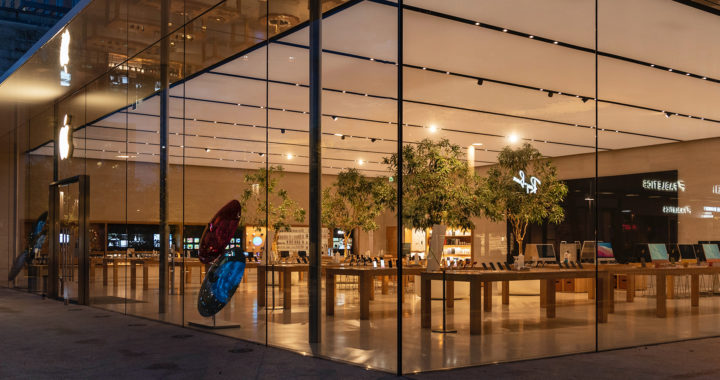Apple is notorious for offering ridiculously expensive products, especially when compared with counterpart products from its competitors. Why exactly are they expensive? What are the considerations within the price models of its products? Answering this question requires understanding the pricing strategy of Apple.
The Multi-Faceted Pricing Strategy of Apple: From Premium Pricing to Psychological Pricing Strategies
Note that flagship Apple products such as the iPhone and the MacBook Pro have higher price tags compared with their counterpart products, such as most flagship Android smartphones and high-tier Windows laptops. This is indicative of a premium pricing strategy. However, the company also utilizes other pricing strategies.
1. Premium Pricing
Remember that the premium pricing strategy of Apple is the most obvious aspect of its marketing mix and one of the critical elements of its business strategy. The company justifies the higher price tags on its products through a value proposition that revolves around superior build quality and exceptional consumer experience.
The iPhone and the iPad, as well as the entire line of Mac desktop computers such as the MacBook Pro and the iMac and other devices, such as the Apple Watch, are fundamentally considered luxury consumer electronic products that provide providing a sense of extravagance that draws consumers into a positive emotional experience.
Of course, another reason for this pricing strategy is for the company to maximize its profitability. Note that the cost of producing the iPhone 13 Pro is around USD 600.00 but it retails between USD 999.00 and USD 1449.00. This difference between the cost and the price allows Apple to remain a profitable business organization.
Premium pricing is possible because one of the sources of the competitive advantage of Apple is its strong brand reputation. iPhones are must-have smartphone devices. The same is true for MacBook Pro laptops. Consumers are willing to pay more because the brand represents exceptional quality and reliability but also desirability.
2. Freemium Pricing
However, apart from the default premium pricing, Apple also utilizes a freemium pricing strategy on some of its products to supplement its promotion strategy. This strategy is a particular revenue model that involves offering a product free of charge while charging consumers for advanced functionalities or features. This is common in services and digital products.
Apple applies this pricing strategy to some of its online-enabled services such as Apple TV, which includes a selection of free television shows and movies, and the music streaming service Apple Music and the video gaming service platform Apple Arcade, which have a free-look and no-commitment subscription option that lasts for a fixed period.
The iCloud storage service is also a free cloud storage service available for all Apple users. However, for those who want to unlock and utilized a bigger storage space, they have to avail of a regular-pay subscription plan that can be paid each month or every year. Note that this pricing model is similar to other online-enabled services.
3. Decoy Pricing
Note that Apple offers a range of products with different variations, as well as several products within a particular product category. For example, the 13-inch MacBook Pro has numerous variations that include a base model and a top-tier model with advanced hardware configurations. This is also true for other Mac computers and even the iPhone and iPad.
Furthermore, the entire iPad product line has the iPad, the iPad Mini, the iPad Air, and the iPad Pro. The same is true for the iPhone, The company has released the iPhone 13 Pro and iPhone 13 Pro Max as its flagship smartphones. However, it also has the iPhone 13 and iPhone 13 Mini as the mid-range smartphones and the iPhone SE 2022 as its budget smartphone.
The base model is the cheapest while the top-tier model with advanced hardware configuration is the most expensive. The different products under the iPad line and the iPhone line also have different price points. The vanilla iPad is the cheapest in the entire line and the iPhone SE has been marketed as the most affordable iPhone product.
Nevertheless, offering product variants and multiple products under a single category adheres to the concept of a decoy pricing strategy. The least expensive products serve as decoys that would encourage customers to purchase their most expensive counterparts. However, the most expensive products can also serve as decoys for the least inexpensive ones.
4. Psychological Pricing
Another interesting aspect of the pricing strategy of Apple is the manner in which it communicates the prices of its products. For example, the iPhone 13 Pro Max retails for USD 1099.00 and the base model of the iPhone SE 2022 retails for USD 429.00. The highest-end of the Apple Watch 7 has a price tag of USD 699.00.
The company does not round off the last two digits of the price tags of its products. Remember that the iPhone 13 Pro Max is priced at USD 1099.00 instead of USD 1100.00 and the Apple Watch 7 is priced at USD 699.00 instead of USD 700.00. This is called a psychological pricing strategy and it intends to provide positive psychological impacts.
Note that several companies also follow the same strategy when it comes to communicating the prices of their product. On the surface, a product priced at USD 429.00 seems more attractive than a similar product priced at USD 430.00. This minor distinction in pricing can make a big difference in sale and makes the relevant products more attractive.





